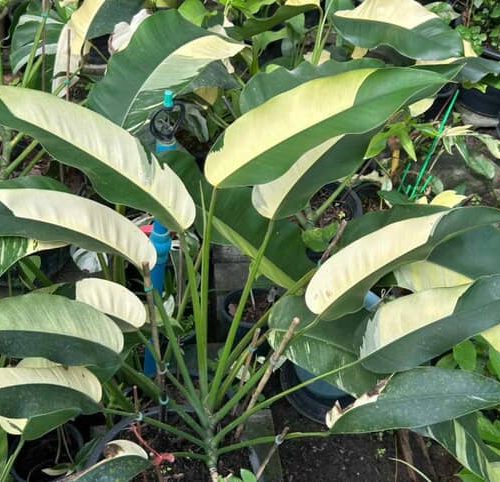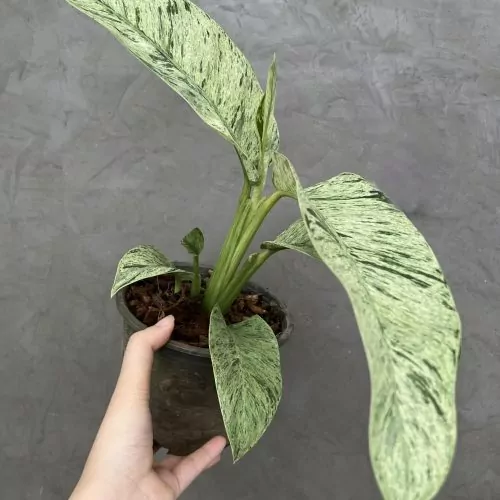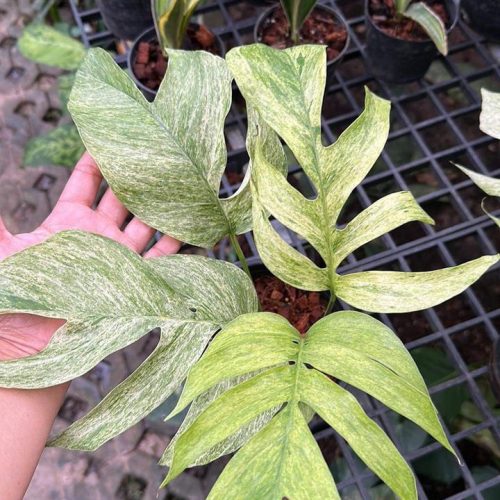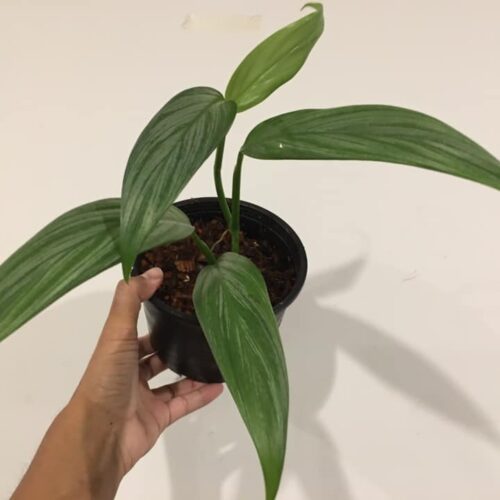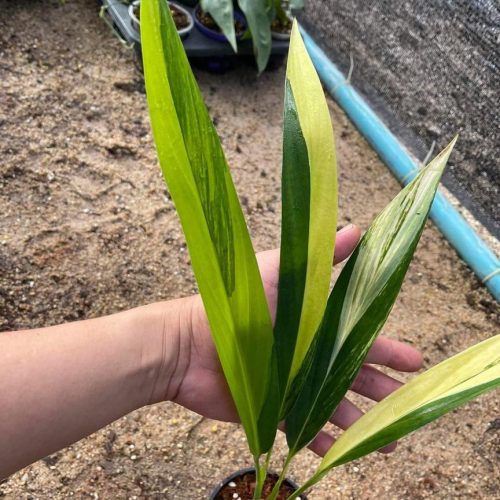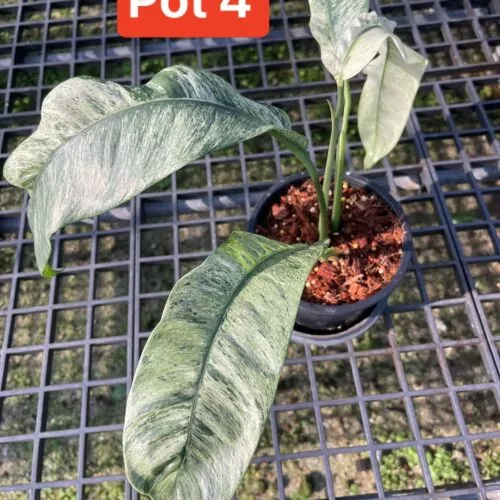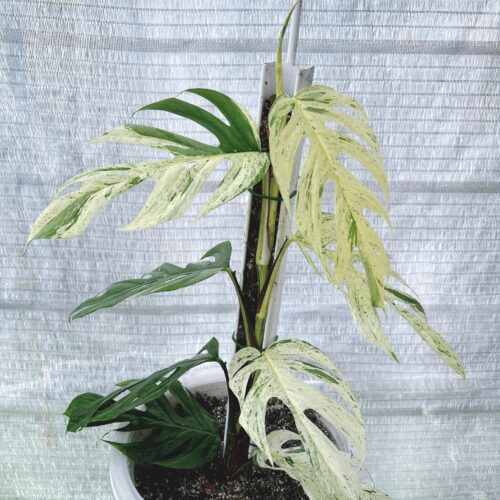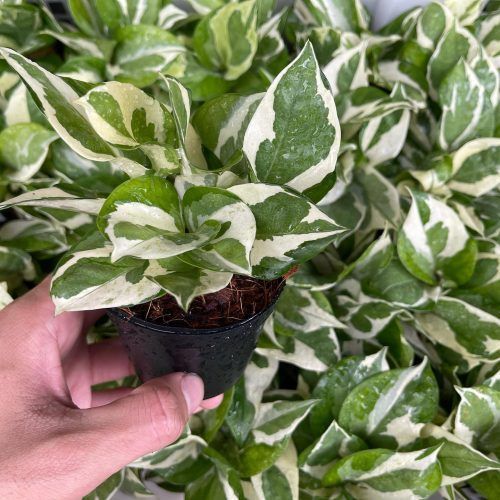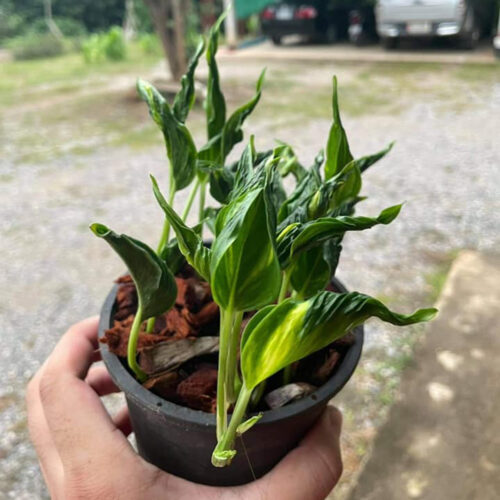The Marble Queen pothos is a gorgeous variety of pothos plant featuring unique white and green variegated leaves. With its easy care requirements and trailing vine-like growth habit, it makes an excellent houseplant that can thrive indoors in most homes. In this blog post, we’ll explore everything you need to know about caring for and enjoying this beautiful plant.

Light Requirements
The Marble Queen pothos prefers bright, indirect sunlight. Too little light can cause the leaves to revert to solid green, while too much direct sun will burn the foliage.
Finding the Right Balance
When growing a Marble Queen indoors, it’s important to find the right balance of light exposure. An east or west-facing window is often ideal, providing plenty of gentle morning or afternoon sun. Just be sure to diffuse the light with a sheer curtain.
Supplementing with Artificial Light
If natural light in your home is limited, supplement with a grow light or fluorescent shop light. Situate the pothos 6-12 inches from the bulb and provide 14-16 hours of daily exposure for best growth and variegation.
For those who are new to caring for pothos or want to ensure they provide the ideal light conditions, the “5 Easy Steps to Lush Epipremnum Growth: Master Pothos Care Today!“ offers comprehensive insights into the light requirements and other care tips for thriving pothos plants.
Soil Needs
Marble Queen pothos does best in a loose, well-draining potting mix. This allows oxygen to easily reach the roots while also preventing soggy soil.
Creating Custom Potting Mixes
Many gardeners create custom potting mixes for pothos plants using ingredients like peat moss, perlite, and bark chips. Aim for a mix that retains some moisture but also drains well after watering.
Commercial Indoor Plant Soils
There are many commercial indoor plant soil blends available that are specially formulated for plants like pothos. Look for mixes containing compost, coconut coir, vermiculite, perlite or sand.
If you’re curious about the best soil composition for your pothos and other Epipremnum varieties, be sure to check out “5 Essential Tips to Water Your Devil’s Ivy: Keep Your Epipremnum Thriving!“, which includes valuable information on creating the ideal soil environment for these plants.
Watering Techniques
Establishing the right watering technique is key to keeping any houseplant healthy. For the Marble Queen pothos, thorough yet infrequent watering is best.
Observing the Leaves
The leaves are the best indicator of when to water. If they begin to curl, droop or wrinkle, it’s time to thoroughly soak the soil. After watering, the leaves will perk back up.
Checking Soil Dryness
It’s also wise to check the top few inches of soil before watering. If the soil is dry to the touch, the plant likely needs a drink. Allow the soil to fully dry out between waterings.
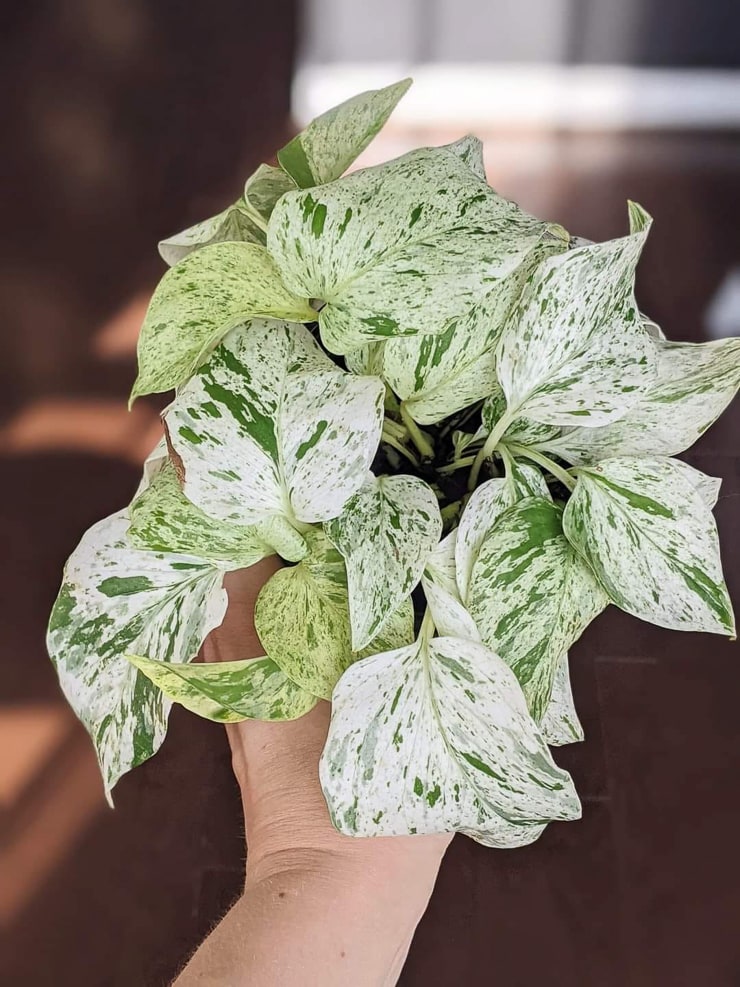
“Transform your space with the elegant Marble Queen Pothos. Click here to bring this stunning, easy-to-care-for plant into your home today!”
Feeding Regimen
Like most foliage houseplants, Marble Queen pothos has modest nutrient requirements. But providing balanced fertilizer during the growing season will promote healthy, vibrant growth.
Type of Fertilizer
Choose a houseplant fertilizer that provides an even ratio of crucial macro-nutrients, like a 10-10-10 formula. Avoid fertilizers high in nitrogen, which can promote leggy growth.
Application Frequency
Only fertilize every 2-3 weeks in spring and summer according to label directions. Discontinue feeding over winter when growth naturally slows. And always water the plant 24 hours before fertilizing.
Pruning Practices
Pruning is beneficial for maintaining a compact, bushy Marble Queen pothos specimen with plenty of new growth. It also prevents legginess.
Pinching Stems
Pinching or snapping off the tender stem tips triggers branching lower down, making the plant fuller. Focus on pinching the longest stems first.
Cutting Back Overgrown Stems
Overgrown, unattractive stems can be cut back to just above a node or junction point to encourage new shoots. Always sterilize pruners between cuts with isopropyl alcohol.

Propagation Methods
One of the best things about Marble Queen pothos is how exceptionally easy it propagates! This allows you to multiply your plant for free.
Rooting Stem Cuttings in Water
Simply snip 4-6 inch stem tip cuttings below a node. Remove lower leaves then place in water. Roots and plantlets will soon emerge at nodes.
Cultivating Babies Via Air Layering
Air layering involves wounding then wrapping a moist medium around a stem midway along its length. Roots form allowing it to be cut and potted up.
Troubleshooting Common Issues
While relatively hassle-free, Marble Queen pothos can encounter a few issues. But most are easily corrected with a few tweaks to care.
Lack of Variegation
Insufficient light often causes solid green leaves rather than white variegation. Provide brighter filtered light to remedy this. Fertilizer low in nitrogen also encourages variegation.
Leaf Spotting & Discoloration
Leaf spots or yellowing is typically from overwatering or soggy soil. Allow the soil to fully dry out over a longer interval before watering again. Remove any severely affected leaves.
Slow Growth
Slow growth and small leaves indicate too little light or nutrients. Move the plant closer to a bright window and fertilize every 2-3 weeks during the growing period for improved size and growth rate.
For those encountering similar challenges or curious about pothos plant safety, especially in homes with pets, the guide “Is Your Pothos Plant Safe? 5 Key Facts to Know!“ can provide helpful troubleshooting tips and safety information.
Where to buy Marble Queen Pothos? Benefits from importing plants from Thailand
- Shipping: Door to door shipping, fast and safe with Dragon Courier
- Biodiversity: Thailand is known for its rich biodiversity, including a wide variety of aroid species. This diversity allows importers to access a broad range of unique and exotic aroid plants.
- Quality and Health of Plants: The suitable climate helps the plants grown here stay healthy and of high quality.
- Cost-Effectiveness: Due to favorable growing conditions and efficient production methods, Thai aroid plants can often be more cost-effective compared to those from other countries.
- Access to Hybrid Varieties: Thai growers are often involved in the development of new hybrid aroid varieties, offering unique plants that may not be available from other sources.
Pothos species are the most sought after by aroid plant lovers
Conclusion
With its cascading vines studded with gorgeously variegated leaves, Marble Queen pothos makes a fabulous tabletop or hanging accent plant. By providing this tropical foliage plant with adequate bright, indirect light and allowing the potting mix to dry adequately between waterings, it will reward you with vigorous, healthy growth year-round. Just be sure to pinch back extra-long stems occasionally and fertilize lightly during spring and summer. In no time at all, you’ll have a spectacular pothos specimen thriving beautifully inside your home.
FAQs
- Can Marble Queen Pothos grow in water? Yes, it can grow in water indefinitely, but its growth may be slower compared to those planted in soil.
- Is Marble Queen Pothos toxic to pets? Yes, it can be toxic to cats and dogs if ingested, causing symptoms like vomiting and irritation.
- How often should I repot Marble Queen Pothos? Generally, repotting every 2-3 years is sufficient.
- Why are the leaves on my Marble Queen Pothos turning brown? This could be due to over-fertilization, low humidity, or excessive sunlight.
- Why is my Marble Queen Pothos losing its variegation? This typically happens when the plant is not getting enough light.

